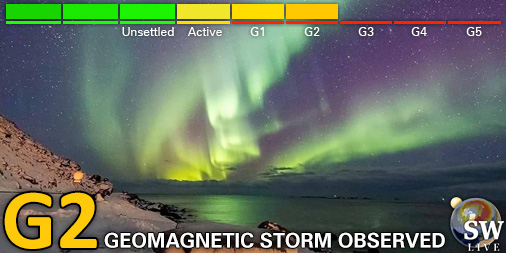Moderate G2 geomagnetic storm due to CME effects
Friday, 10 April 2015 17:52 UTC
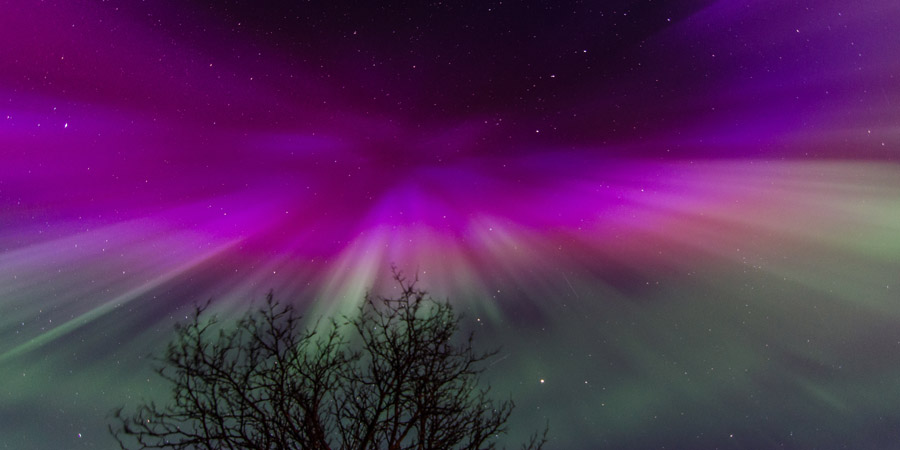
Minor G1 geomagnetic storm levels have been observed according to the Wing-Kp index during the past 24 hours with the NOAA SWPC even reporting one period where the moderate G2 geomagnetic storming threshold was reached. Cause of this activity is a series of weak coronal mass ejection passages from likely a filament eruption and two lesser C-class solar flares. It was unsure if these coronal mass ejections would arrive at Earth but the solar wind data from ACE show two, possibly even three separate shock passages which managed to spark stunning aurora displays at high latitude locations during the past 24 hours. Keep on reading for some stunning auroral images taken the past night by photographers around the world.
Canada

Zoltan Kenwell (Lamont, Alberta)
Ireland
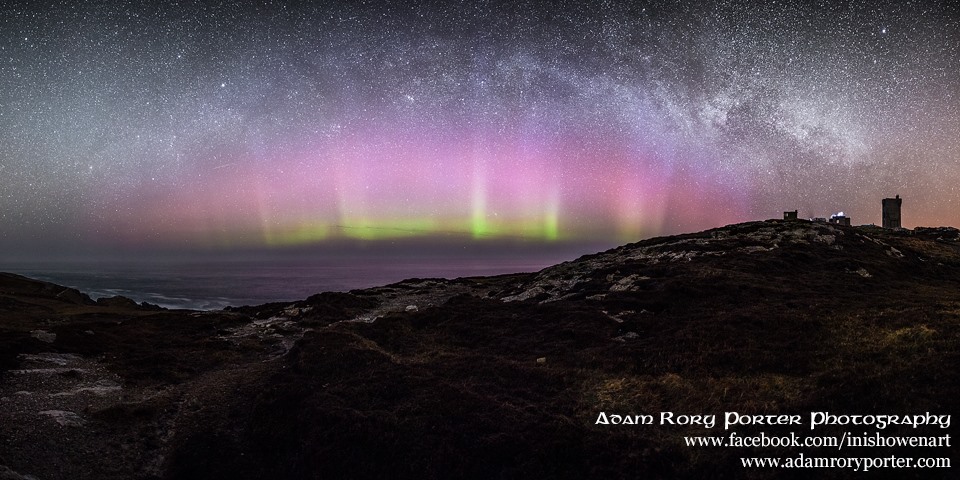
Adam Rory Porter (Malin Head)
Norway

Steven Henriksen (Lofoten)
Sweden
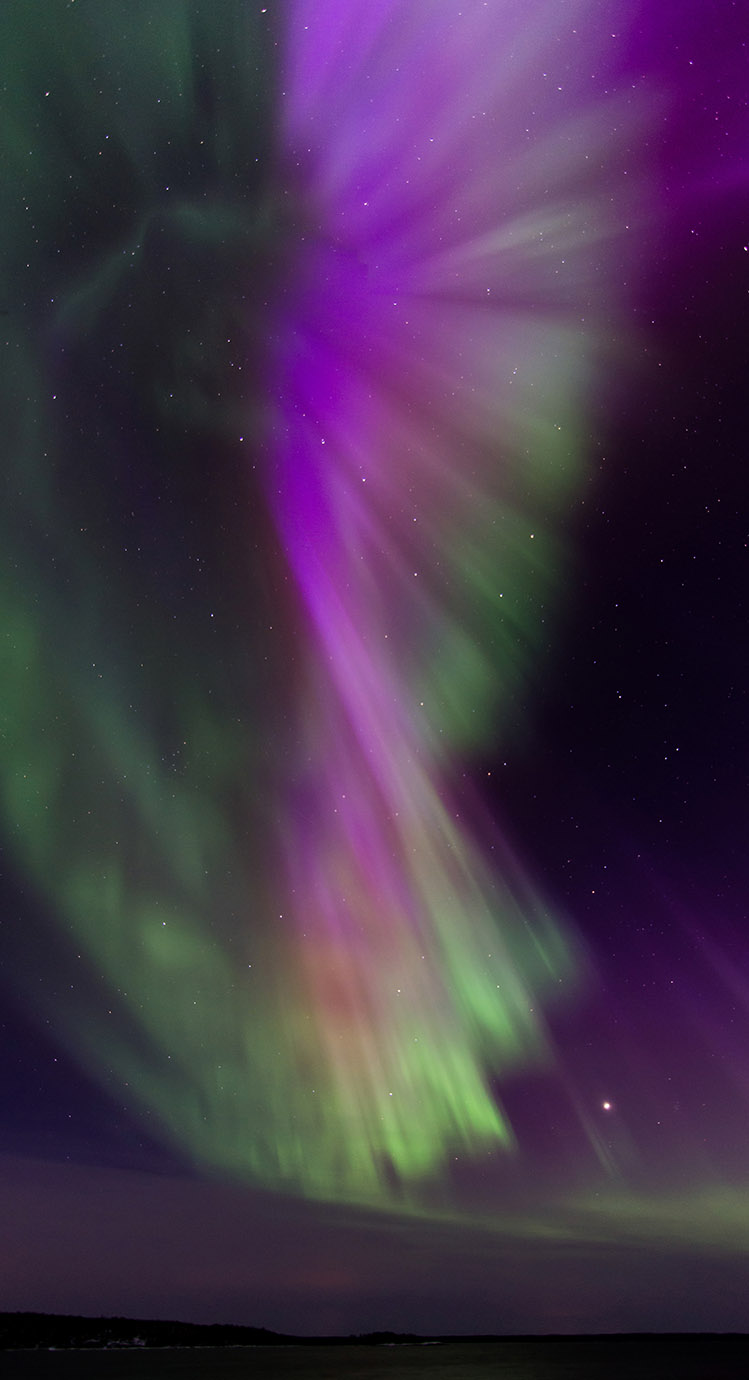
Marcel de Bont (Bjuröklubb, Västerbottens Län)

Göran Strand (Östersund)
United Kingdom
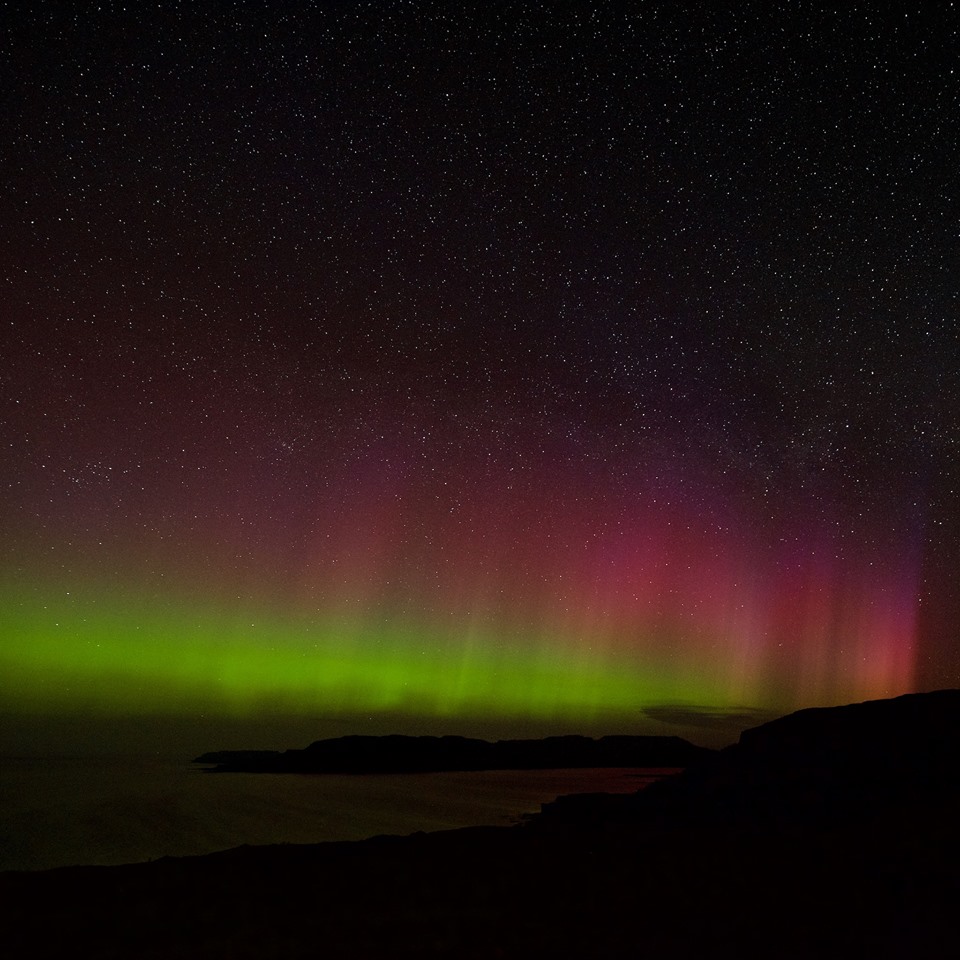
Carolyne Mazur Charrington (Treshnish, Isle of Mull)
United States

Sebastian Saarloos (Delta Junction, Alaska)
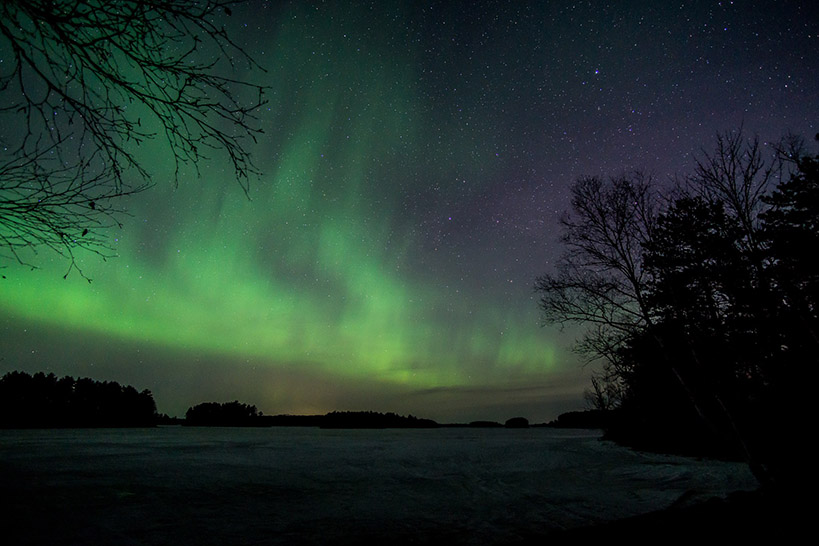
Les Conrad (Bear Island Lake, Babbitt, MN)

David Johnson (north of Grand Marais MN)
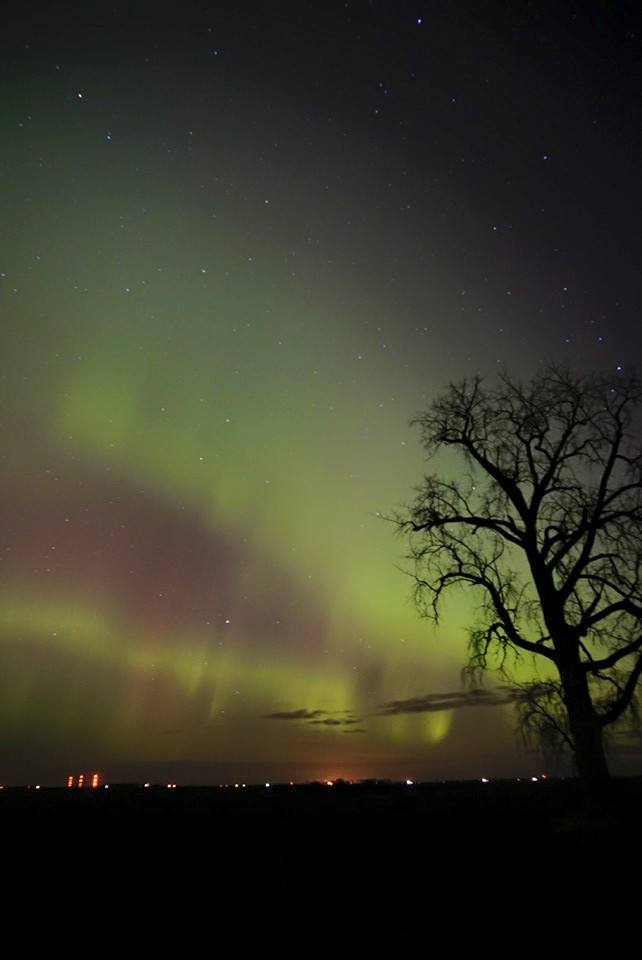
Mike Crawford (Fisher, MN)
Current conditions
The strength of the IMF (Bt) remains elevated near 16nT which is a moderate value and the direction of the IMF is southward but slowly trending towards zero. The speed of the solar wind has fallen below the 400km/s as CME effects start to wane. Geomagnetic activity will still be elevated at high latitude locations and Kp-values up to 4 remain possible in the hours ahead.
Thank you for reading this article! Did you have any trouble with the technical terms used in this article? Our help section is the place to be where you can find in-depth articles, a FAQ and a list with common abbreviations. Still puzzled? Just post on our forum where we will help you the best we can!
Current data suggests there is a slight possibility for aurora to appear at the following high latitude regions in the near future
ReykjavikTromsø
Kiruna
Latest news
Latest forum messages
Support SpaceWeatherLive.com!
A lot of people come to SpaceWeatherLive to follow the Sun's activity or if there is aurora to be seen, but with more traffic comes higher server costs. Consider a donation if you enjoy SpaceWeatherLive so we can keep the website online!

Latest alerts
20:30 UTC - Geomagnetic activity
Moderate G2 geomagnetic storm (Kp6) Threshold Reached: 20:08 UTC
20:15 UTC - Geomagnetic activity
Minor G1 geomagnetic storm (Kp5) Threshold Reached: 20:00 UTC
18:00 UTC - Geomagnetic activity
Moderate G2 geomagnetic storm (Kp6) Threshold Reached: 17:00 UTC
17:00 UTC - Geomagnetic activity
Minor G1 geomagnetic storm (Kp5) Threshold Reached: 16:28 UTC
14:15 UTC - Geomagnetic activity
Moderate G2 geomagnetic storm (Kp6) Threshold Reached: 13:58 UTC
Space weather facts
| Last X-flare | 2025/02/23 | X2.0 |
| Last M-flare | 2025/03/26 | M1.0 |
| Last geomagnetic storm | 2025/03/22 | Kp6- (G2) |
| Spotless days | |
|---|---|
| Last spotless day | 2022/06/08 |
| Monthly mean Sunspot Number | |
|---|---|
| February 2025 | 154.6 +17.6 |
| March 2025 | 135 -19.6 |
| Last 30 days | 133.7 -19.9 |







